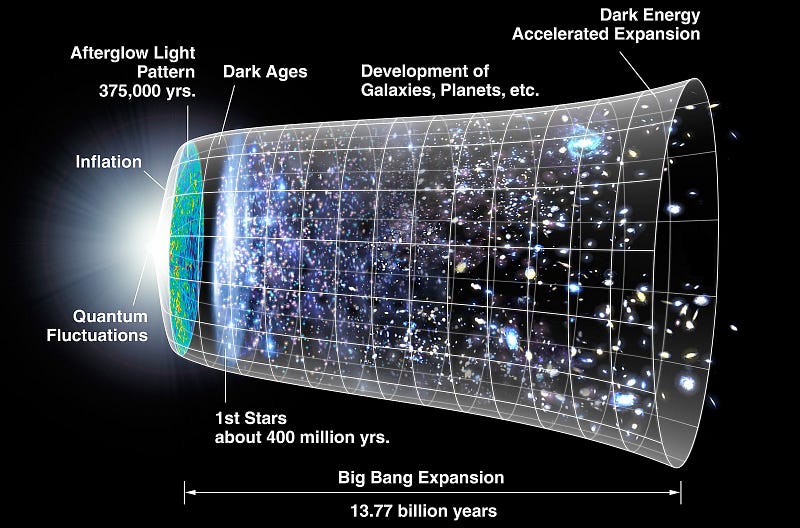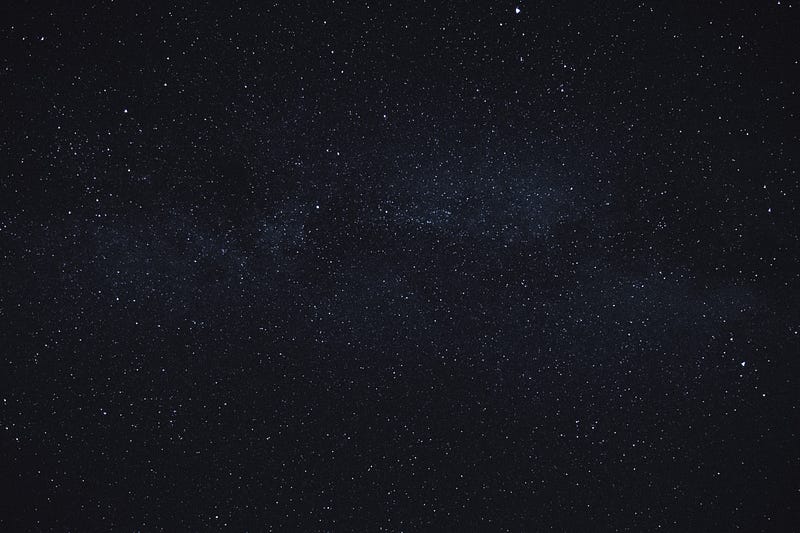Expanding Universe: What Lies Beyond the Cosmic Horizon?
Written on
Chapter 1: The Enigma of Cosmic Expansion
The idea of an expanding universe has intrigued scientists and cosmologists for many years, raising a crucial question: What is the universe expanding into? This article delves into the complexities of this cosmological phenomenon and examines various theories that strive to explain this enigmatic cosmic mystery, starting with a historical perspective on the expanding universe.
Hubble's Groundbreaking Findings
In the 1920s, Edwin Hubble made revolutionary observations that revealed the universe is indeed expanding. Galaxies, akin to isolated islands in the cosmos, are moving away from each other, creating a breathtaking image of a universe in constant change. This pivotal discovery led to the development of the Big Bang theory, which posits that our universe originated from an extraordinarily dense and hot singularity approximately 13.8 billion years ago. Yet, this prompts another question: What exists beyond this universe?
The succinct answer is that the universe isn't expanding into anything external; it encompasses everything. The expansion occurs within its own bounds, leaving no outside space for it to expand into. The more detailed explanation is that distances between galaxies are increasing over time, and space itself is stretching. This expansion does not resemble an explosion or a balloon inflating, which would have a center and an edge. Instead, the expansion is uniform throughout the universe, with no specific point or direction.

Timeline of the Universe. Credit: NASA/WMAP
The shape of the universe presents yet another intriguing question. Scientists remain uncertain about whether the universe is finite or infinite, and they are still investigating its geometry. It might be spherical, flat, or even hyperbolic (curving upwards). Current evidence leans toward a flat universe, adhering to Euclidean geometry principles (parallel lines never intersect, and the angles in a triangle sum to 180 degrees). However, even if it is flat, it could still be finite without having a boundary. Picture a flat piece of paper that is bent to connect opposite edges, forming a cylinder, and then the ends of the cylinder are joined to create a toroidal shape. A minuscule being residing on this toroidal surface would never encounter an edge, even though the surface itself has a finite area. The same principle could apply to our three-dimensional universe, though visualizing its shape in four-dimensional spacetime is beyond our grasp.
Some theories even suggest the existence of additional dimensions beyond the three spatial dimensions we experience. String theory and M-theory propose the existence of extra dimensions referred to as hyperspace. These additional dimensions might provide insights into the universe's expansion and could offer hints about what lies beyond our observable universe. However, it is essential to note that we currently lack solid experimental evidence supporting string theory.
Chapter 2: The Multiverse Concept
The multiverse hypothesis is a compelling notion that has been popularized in various forms of media, including Marvel films. This hypothesis suggests that our universe is merely one of countless others, each with its distinct physical properties.

Photo by Kai Pilger on Unsplash
These alternate universes, often termed parallel or bubble universes, may exist within a higher-dimensional space. The inflationary theory, which builds upon the Big Bang concept, proposes that our universe experienced rapid expansion shortly after its inception. This swift expansion could have spawned multiple bubble universes, each governed by its own set of physical laws and constants. If this holds true, the expanding universe we observe is merely a fragment of a far grander cosmic landscape.
Limitations of Our Understanding
Regrettably, our current grasp of physics and cosmology is insufficient to fully address the question of what lies beyond the expanding universe. The intricacies of time, space, and the fundamental laws of physics become increasingly complex and elusive as we explore beyond our observable universe.
If you found this article engaging, consider clicking the “clap icon,” as it encourages me to produce more content like this! You can also join Medium by following my referral link and subscribe to receive my stories directly via email. Thank you!